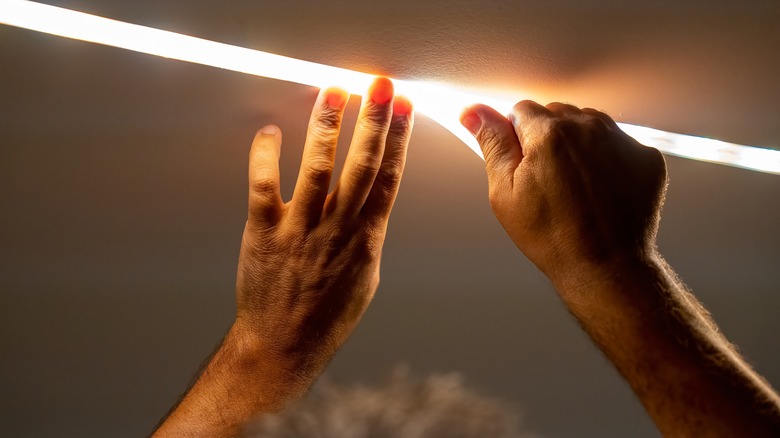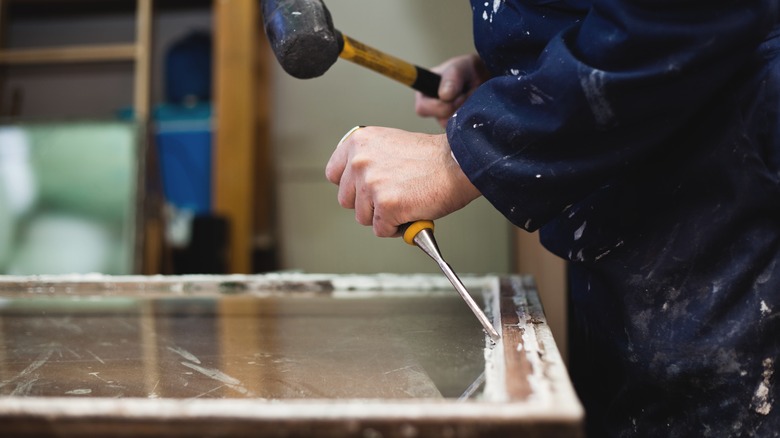Add The Feeling Of Natural Lighting To Your Home With This LED Hack
There's a space somewhere in your home that needs a window it'll never get. You might be sitting in it now, looking for a solution to a claustrophobic and dark room that no amount of mere brightness can lighten. It's pretty common in interior rooms like bathrooms, laundry rooms, attics, bonus rooms, basement spaces, and windowless hallways in need of brightening. The solution might not be a real window but a fake one.
Faux windows are increasingly common and can be a fairly simple DIY project. There are dozens of ways to get there from here, but they all involve cleverly using LEDs to brighten a space and create the impression of a window where one doesn't exist. That impression is created by the shape and position of the fake window, along with the color and nature of the light it provides. That is, a fake window should be where a window would be; it should be shaped like a window, and the light that comes from it should trick the eye by resembling daylight.
A picture frame faux window
YouTuber @shootingGBS has a good solution that involves a large picture frame, some glue, and inexpensive strip lights. When the lights are on, it gives the impression of a window allowing natural light in. When off, it's mysterious-looking, suggesting a modern-looking artwork of sorts. It certainly does the work of bringing openness and light to a windowless room.
The YouTuber creates this window illusion by giving a large picture frame some depth with pine furring strip boards attached to all four sides. This depth is necessary for the window's diffusion layer to work. The diffusion layer is created by evenly coating the glass with a layer of PVA (white) glue so that the winding series of strip LEDs below look like one overall glow rather than individual light strips. The LEDs are glued to foil lining the back of the framed area. All of this creates the natural-looking diffuse light that fools one into perceiving a window in the space.
A fake window made from a window
There are, of course, other ways to make a realistic-looking fake window. Perhaps the most obvious is to simply use a window — most likely an old window sash – as the frame for your LED window. This obviously contributes to the window illusion, but there is one caveat. Because you need depth between the diffusion layer and the LEDs for proper diffusion, you must add a reflective surface to the back of the window sash (the wood frame that holds the glass in place). This creates a little more thickness in the faux window. However, a sash flush-mounted to a wall already doesn't look much like a real window since we're used to seeing sashes inset into the wall. Of course, where insulation isn't an issue, you can build in a recessed lightbox, a common basement-enhancing lighting idea. Otherwise, sheer curtains could be a conveniently placed distraction to hide some of the protruding edges.
Sometimes, LED frames are not created by a field of LEDs taking up the entire pane but by sticking them around the perimeter. This is common when an image is going to be used as a fake outdoor scene, like in some commercial faux windows. It's also how many LED monitor screens work on laptops. The trick, again, is proper diffusion of the light. However, it's hard to manage without proper diffusion lenses like LED screens have, so it's likely best to stick with the long and winding LED strip.

